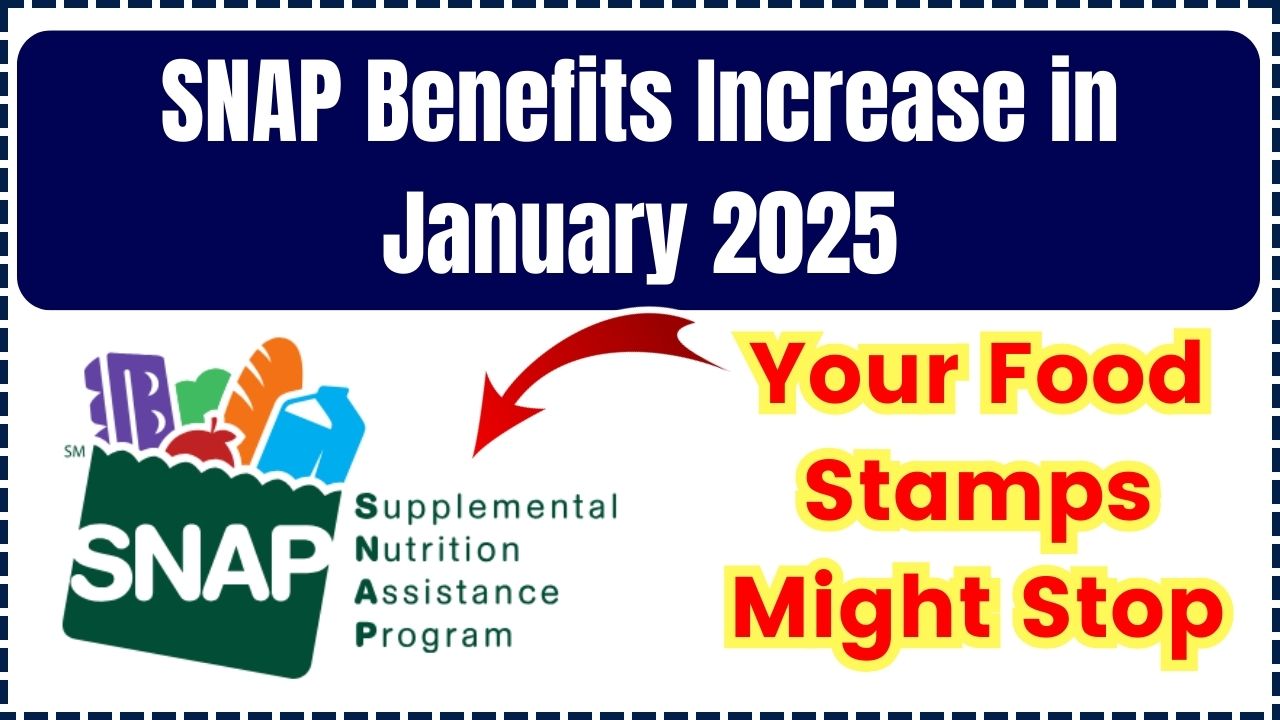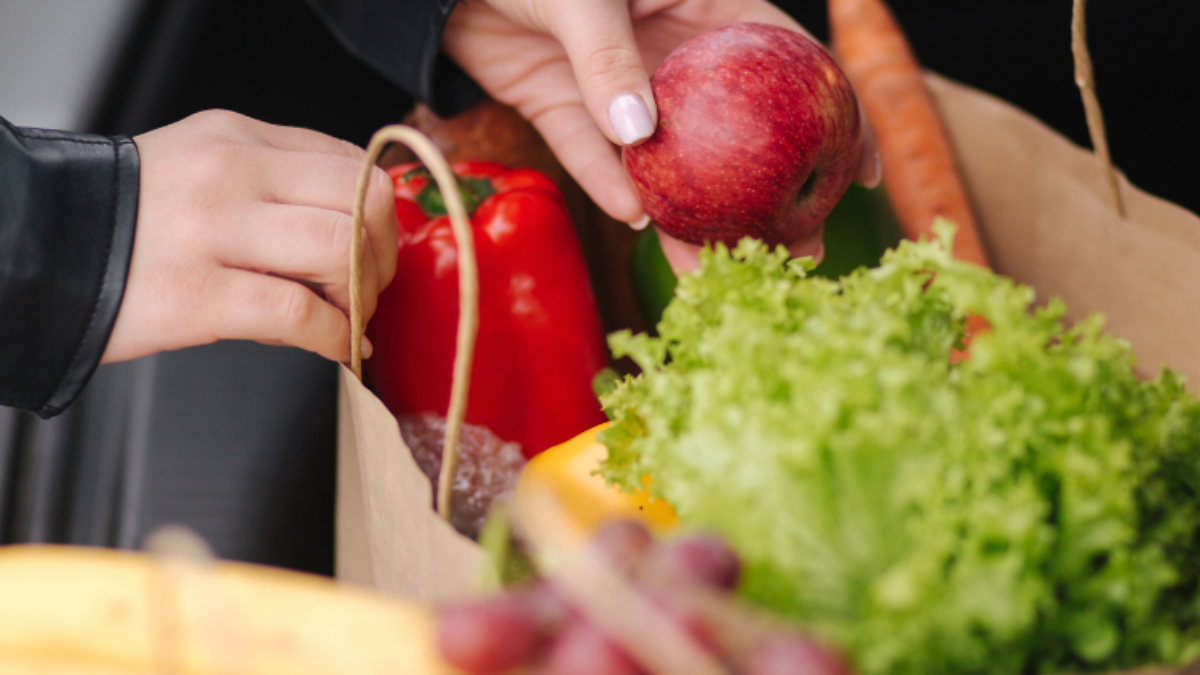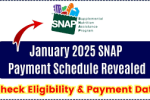The Supplemental Nutrition Assistance Program (SNAP), also known as food stamps, is a federal assistance program aimed at helping low-income households purchase food. SNAP benefits are provided monthly to eligible individuals and families, allowing them to buy groceries to meet their nutritional needs.
If you’re considering applying for SNAP in 2025, it’s important to understand that certain documents are required to prove your eligibility. These documents help verify your household’s income, resources, and other factors necessary to qualify for benefits. Here’s a guide to the 11 documents you’ll need when applying for SNAP benefits and how to submit your application.
What Is SNAP?
The U.S. Department of Agriculture (USDA) funds the SNAP program, and the administration costs are shared with each state and territory. To receive SNAP benefits, you must apply in the state where you live. Each state has its own rules, including specific income limits, so it’s crucial to follow your state’s application process. Some states may also consider additional resources, such as cash or money in your bank account, when determining your eligibility.
How to Apply for SNAP Benefits
There are various ways to apply for SNAP, depending on the state you live in. Many states offer an online portal where you can submit your application and required documents. You can also apply by phone, in person at a local SNAP office, or even by mail. If your application is missing any documents, the state agency will notify you and guide you on what to provide next.
It’s important to contact your state’s SNAP office to confirm the specific documentation requirements, as these can vary depending on where you live. Below is a list of common documents you will likely need to submit when applying for SNAP.
1. Proof of Identity
To verify your identity, you must provide one of the following documents:
- Driver’s license
- State-issued ID card
- U.S. passport
- Military ID
- School ID
- Birth certificate
- Adoption records
- Naturalization certificate
2. Proof of Citizenship or Immigration Status
SNAP requires proof of your citizenship or immigration status. You may provide:
- Social Security card
- Birth certificate
- Naturalization certificate
- Green card
- Employment authorization card
- Military records
- U.S. passport
3. Proof of Residency
To prove your residency, provide one of the following documents showing your current address:
- Rental lease agreement
- Mortgage records
- Voter registration card
- A letter from your landlord listing your name and address
4. Proof of Earned Income
If you are employed, you will need to show proof of your earned income. Some acceptable documents include:
- Paycheck stubs
- Tax records
- Bank statements
- A letter from your employer confirming your income
5. Proof of Unearned Income
Unearned income includes government benefits or support payments, and you’ll need to provide documentation for these. Examples of documents include:
- Benefits award letters from your state or Social Security Administration
- Child support award letters
- Pension payment statements
- Dividend payment statements
- Other sources of income
6. Proof of Resources
SNAP considers your financial resources, such as savings or property that could be used to support your household. Acceptable documents for proof of resources include:
- Bank statements from checking and savings accounts
- Stock or bond certificates
- Documents showing ownership of vacation or recreational properties not used as a primary residence or for earning income
7. Proof of Disabilities
If anyone in your household has a disability, you must submit documentation to prove this. This can include:
- Medical records
- Documentation from a doctor explaining the disability
8. Proof of School Attendance
If you are a student, you’ll need to show proof of enrollment. Some states may offer an exemption for students under certain conditions. Acceptable documents include:
- Enrollment records
- Proof of student exemption for SNAP
9. Proof of Household Expenses
Your household’s expenses can impact your eligibility, so you’ll need to provide proof of these costs. Examples of documents include:
- Mortgage statements
- Rental receipts
- Homeowner’s insurance proof
- Property tax records
- Utility bills (water, electricity, phone, etc.)
10. Proof of Medical Expenses
If you or anyone in your household has medical expenses, these can also affect your SNAP eligibility. To prove your medical costs, submit copies of:
- Medical, dental, or mental health care bills
- Medical treatment statements
11. Proof of Childcare Expenses
Childcare costs can be considered when determining your eligibility for SNAP, so you’ll need to provide proof of these expenses. Acceptable documents include:
- Child support payments
- Dependent childcare receipts
How to Submit Your Application
Once you have gathered all necessary documents, you can submit your application for SNAP benefits. Be sure to follow your state’s instructions for the submission process. Whether you apply online, in person, by phone, or by mail, make sure all required documents are included to avoid delays.
What Happens After You Apply?
After you submit your application, the state SNAP office will review your documents and determine your eligibility. If your application is missing any required documents, you will be contacted by your local office. They may ask you to submit additional paperwork or clarification before your application can be processed.
Once approved, you will begin receiving monthly SNAP benefits that can be used to purchase eligible food items. Benefits are typically issued through an Electronic Benefits Transfer (EBT) card, which functions like a debit card.
Conclusion
Applying for SNAP benefits in 2025 requires careful attention to the documents needed to prove your eligibility. By gathering the necessary paperwork ahead of time, you can help ensure a smoother application process. Make sure to contact your local SNAP office for any state-specific requirements and submit all required documentation to avoid delays. Remember, SNAP is designed to provide nutritional assistance to help low-income households, so taking the time to prepare your application correctly is important for accessing the support you need.








